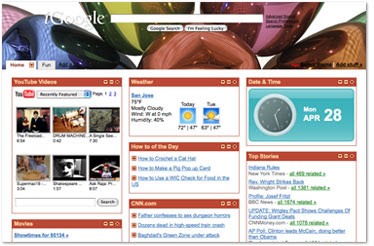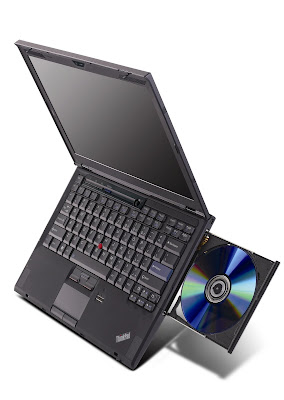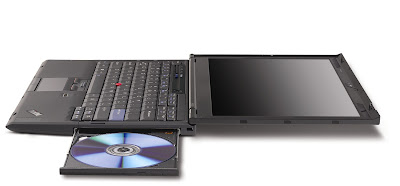Just another journal of an ex-Comms/PR/Creative-content-guy-who-went-back-to-tech-journalism (well sort of... Dedicated to all stuff needed to be said...Whether they're 'auta' or not, but might be related to 'auta.' 'Auta' means something really unbelievable, poppycock or bull-crap-like...
Saturday, May 17, 2008
Widget vs. Android story...
http://www.nst.com.my/Current_News/techNu/Monday/Notebook/20080218152854/Article/index_html
Really can't wait till Android comes to town...
Widget versus Android
by: Hazimin Sulaiman
IT might sound like a cult sci-fi movie title from the 50s, but it’s not. It does, however, concern two superpowers in the Internet realm – Yahoo and Google. The year 2008 certainly has proven to be a fast-moving one. It was just earlier in the year when Yahoo unveiled its plans at CES 2008, Nevada, and gave us glimpses into what the company’s future looks like.
A few weeks later, it was reported that Yahoo was suddenly laying off 14,000 staff. And just two weeks ago, the news came that Microsoft wants to buy Yahoo yet again after similar attempts in the past.
Last week came the news that the main Internet search engine, Google, has just released its much-awaited Android operating system at the World Mobile Congress in Barcelona.
Well, it seems that the battle has just escalated to mobile devices. This is of course, not surprising, given that Yahoo’s projection said that the mobile market segment will reach four billion phones by 2010.
From the likes of it, Yahoo will have to be on its toes in order to survive all these external pressures. It is doing so with the power of widgets/widgetry if you please.
Ironically, the way that both Yahoo and Google are going about laying their stake on this new territory are one and the same. This involves making it easy for a lot of people such as developers, advertisers and publishers to get on board and be profitable.
In Yahoo’s case, the company wants to make it extremely easy for mini-applications called widgets to be made by anyone who is familiar with .XML coding. Yahoo has been widget crazy and driven for some time.
This is proven by its purchase of Pixoria, the company behind Konfabulator years ago. Pixoria used to make widgets for the Mac OS.
Similarly, in Android’s case, Google wants to make it easy for developers to quickly and cheaply write applications for mobile phones, minus the licensing fees.
Both ideas are the same as they are different: one wants you to invade your mobile/smartphone via a client called Yahoo Go (which is needed to run the widgets), and another wants to have its operating system on your phone.
The Yahoo Go 2.0 is supposed to be already available for over 300 devices. Such a “soft-invasion” might have better acceptance by various manufacturers, and it also means that widgets can be written once and used in many devices, regardless of manufacturers or platforms. Hence, the beauty of widgets.
In the case of Andriod, Google intends to provide what seems to be another platform altogether. However, just like open source OS such as Linux, this might pose some problems. Granted this can only be qualified in due time when we actually get to see, use and feel Android.
OSes also tend to require more time to mature into a stable platform. Take Windows Mobile, for example, it only started to reach a degree of reliability and stability after Windows CE 3.0 (Microsoft Windows Pocket PC).
Needless to say, the lesser Windows CE (or WinCE for short) 1.0 to 2.0 made a lot of people WinCE. In those days, Palm OS reigned supreme. But it serves to show that diligence and financial stability does make the OS better.
It all boils down to how long can an OS developer sustain itself to get better. Is Google game enough to do this? Only time will tell.
Teething problems and a rocky road will definitely be abound for Android. Google will have to toughen its resolve, especially since the company is not just aiming for the mobile phones market.
Google’s chairman and CEO Eric Schmidt believes that Android would start an entire new wave of innovation unseen before in the industry. He is confident that this platform will amaze users by the amazing things it will be able to do on their mobile devices.
What does Yahoo think about the invasion of the Android? Will it disrupt the Yahoo widget invasion plan for the mobile phone space in 2010?
Marco Boerries, executive vice president of Yahoo Connected Life, cited at the recent CES that “Android is just another operating system. We’ll support it by giving its users a great user experience with Yahoo Go.”
Well, Yahoo Go on the Android? Now who’s invading who? Let’s see how it goes.
Monday, May 12, 2008
Personalised Google Themes!

with some great new homepage designs and giving these artists a way to be discovered and to express themselves to millions of people on the Internet,” says Callow.
The New Lenovo X300: Lighter than Air!

Hmm. OK, been working on this one and just thought that it was interesting to some people who want to oogle at a RM9,588 notebook PC!
Lighter than Air
By Hazimin Sulaiman
Product: Lenovo ThinkPad X300Enquiries: Think Products (Malaysia) (03-76818000) or www.lenovo.com/my/en
Price: RM9,588
Specifications: Processor: 1.20GHz Intel Core 2 Duo L7100 (800Mhz FSB, 4MB Cache)
Operating System: Windows Vista Business
Graphics Adapter: Intel X3100Memory: 2GB Hard disk drive: 64GB SSD
Optical Drive: Ultra-thin DVD BurnerConnections: Intel 4965AGN (802.11 a/b/g/n wi-fi), BlueTooth 2.0 EDR.
Dimensions: 12.4 x 9.1 x 0.73 mm
Weight: 1.3Kg (3-cell battery) and 3.32Kg (6-cell battery and DVD Burner).
Verdict: 4
Physical design: 4.5
Features: 4
User-friendliness: 3.5
Performance: 3
Value of money: 2.5
Documentation: N/A
TO summrise, the Lenovo X300 is exrtremely really light. The basic black design, familiar to the ThinkPad series adds to slim-looking appearence of the X300. How light is the X300, well at 1.3Kg (1.42Kg with DVD Burner) it is even lighter than the famous Macbook Air! The Air weighs in at 1.36 kg. Of course if you fit in the 6-cell battery plus the DVD-burner for the X300, the weight goes up to 3.32Kg. But you get the idea: the X300 can give the Air a run for its money. The test model came with a 3-cell battery.
 Technically, the X300 has some great features such as a 13.3-inch LED backlit 1440 X 900 screen and its composite F1 material chassis form factor. The body construction is very solid, as the internal chassis and roll cage uses an advanced carbon-fiber. Even if it feels too light to take punishment, believe me it will. The X300 is thin, almost anorexic like the Air but it comes in the all too familiar design of the ThinkPads before- very business-like; it is after all a business
Technically, the X300 has some great features such as a 13.3-inch LED backlit 1440 X 900 screen and its composite F1 material chassis form factor. The body construction is very solid, as the internal chassis and roll cage uses an advanced carbon-fiber. Even if it feels too light to take punishment, believe me it will. The X300 is thin, almost anorexic like the Air but it comes in the all too familiar design of the ThinkPads before- very business-like; it is after all a businessnotebook PC anyway.
The lid is covered with a black rubber-like resin, just as the plam rests near the keyboard- nice to touch but sweaty palms will show and leave residue on your X300.
The Intel Dual Core CPU 1.2 Ghz. does come a tad low as far as specifications are concerned, but for most business applications, thanks to Lenovo's optimisations, the X300 seems to respond OK. For example, the 64GB SSD storage really makes a difference in performance as the boot-up time is less than 30-seconds. The 1.8 inch solid state drive delivers twice the performance of 2.5 inch hard drives used in older ThinkPad notebooks. It also weighs less, uses less power and offers better shock resistance.
This however, obviously, isn't a on-the-road gaming rig; compound that with the Intel Xtreme Graphics Adapter and paltry battery life from the 3-cell battery. While surfing,checking out Youtube and some word-processing, with screen brightness set to medium, the X300 did not even manage two hours usage. Compare that to the rated 4.3 hours; granted however, it depends on what sort of Wireless connections and applications are being used. The 6-cell Lithium-Polymer battery has been rated by Lenovo to run for 6.5 hours.
What's equally annoying is that when the screen blinks out to save power and you coax it back to wake up, the screen brightness is set to dimmed. It doesn't seem to remember the brightness you've set before. This is at Lenovo's Maximum battery life preset setting of course. Optionally, you can also remove the optical drive and slot in another battery for longer usage.
Well, that all said, the X300 is extremely comfortable to tote around and use.
Thanks to its full-sized keyboard, trackpoint navigation, touchpad and fingerprint reader. The fingerprint reader is cool for security reasons as it relieves you the process of re-entering your password everytime you wake it up from a nap. The integrated Web camera along with the built-in condenser microphone is supposed to allow Skype calls to be made, once you're signed on to Skype and installed the software.
The 1.2 GHz core 2 duo processor also means that it eats up les power in the long run and builds up less heat as well. The glossy bottom bezel area and the blue-glowing ThinkVantage and power buttons do add a nice touch. The surprisngly decent sounding speakers are located on the corners to come seamless with the X300. They actually sound better than previous
generation of Thinkpad X series. Even the heat vent grills are painted black to blend in.
The X300 offers more ports and an Optical Drive compared to the Apple MacBook Air: 3 USB 2.0 ports, Gigabit Ethernet, audio out, microphone in, monitor out and Kensington lock slot. There's no expansion port, no PCMCIA nor ExpressCard. There's also no type of media card reader.
All in all the X300 has a lot of appeal for business users who constantly travel, but comes off lacking in some departments. Being priced at a premium above RM9,000 range, some would expect more. But the X300 itself is quite a wonder when held and carried. Build quality was not compromised and that's what you're mainly getting by getting the X300. A lot of new
technologies were also put into this machine , such as the new SSD storagte medium- smaller and faster than older SATA hard disk drives.